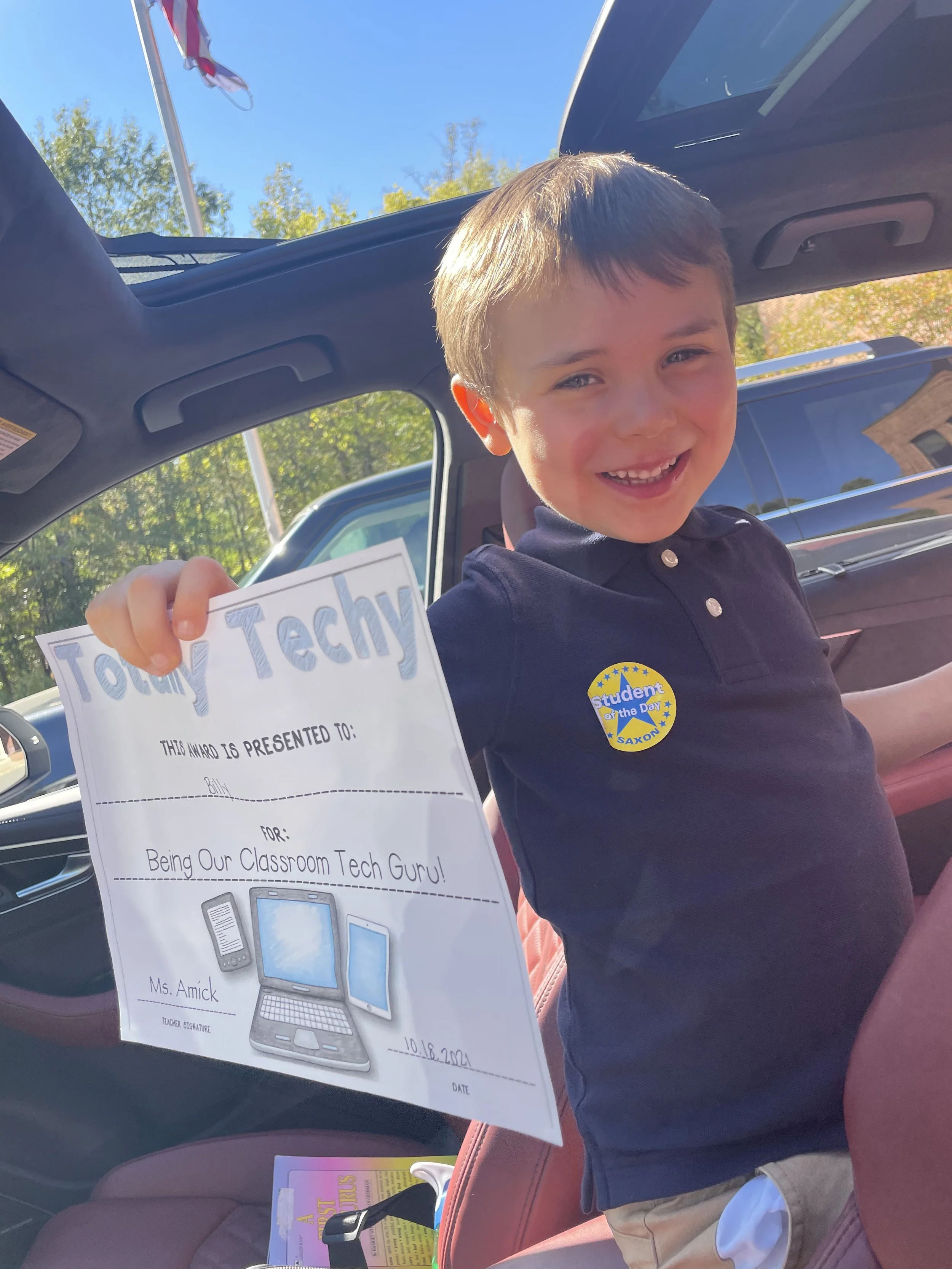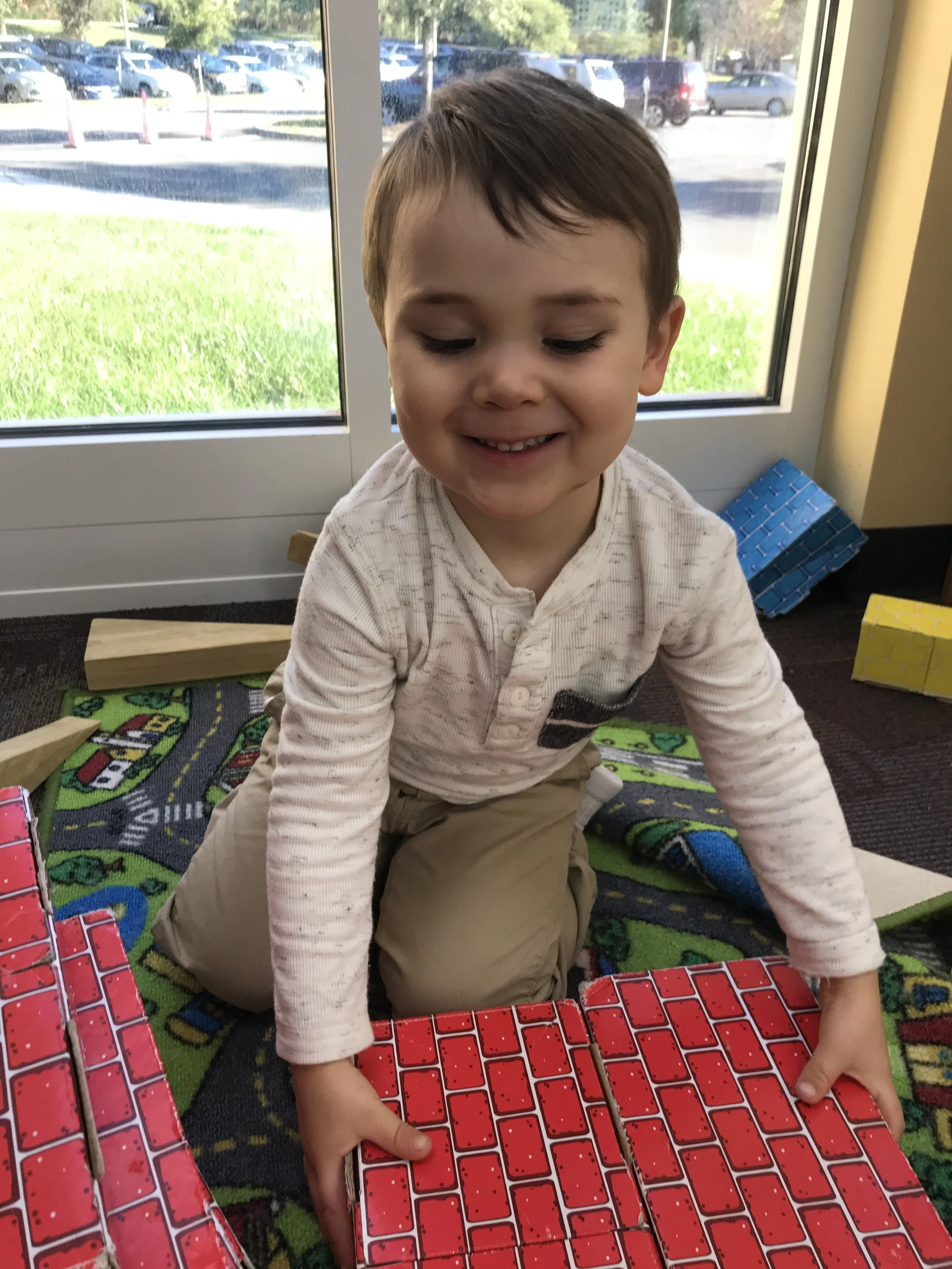Using Core Language to Help My Son with Emotional Trauma
Did you join me in reading It Didn’t Start With You by Mark Wolynn for last month’s book club? If you did, you might recognize the term “core language” - simply put, it’s our body’s subconscious attempt to express repressed emotions through the use of language and specific words. We learned in the book that sometimes these words don’t even belong to us: sometimes they are passed down through our genetic line until someone along the way picks them up and gives them the attention they so desperately need to finally resolve.
Core Language sounds like words that stick out. They’re the phrases that jump out when someone is talking, and they really help define the sentiment of what that person is experiencing /has experienced. Sometimes it will even sound out of place. “They’ll all make fun of me,” or “It’ll never be my turn,” are a few examples of some core language. Core language is basically a red flag directing us to a specific trauma that’s buried deep inside and is looking for someone to acknowledge its existence. And sometimes, acknowledgement itself can be enough to free it.
Allow me to share an experience I had last night with my son. It’s empowering to be able to put to work what was read in the book and know that there was a last effect. If you’re a parent and want to be able to help your child untangle traumas at an early age (instead of letting them compile and knot up over decades, only to have to be sorted later), then give that book a shot. What happened for me was powerful.
Last night, Billy and I were talking about going to school next year instead of continuing homeschool. I turned off the light in his room. It was bedtime, and I’ve found that that’s the best time to get real information from him, a time when he feels vulnerable and will share more openly. So I tuned in to what he was saying about the topic, and let him lead my questions. We have been a homeschool family up to this point, and are now finishing third grade (he’s 8). We tried kindergarten but only did it for a few months. We also did a 3’s class part-time when he was very young.
Since withdrawing from kindergarten, we’ve done homeschool. He’s an only child and doesn’t get that daily exposure to kid interaction. It’s a missing piece. Of course we do team sports and co-ops, but it’s not a regular, daily thing.
He didn’t seem to be very intimidated at all about the thought of going to school. However, for some reason, he brought up being a late-joiner to class, being the new kid, starting late. It tore him up. As soon as the thought of hypothetically joining the class later than the other students crossed his mind, he immediately started crying. I recognized this as some core language. Core language can present as body language as well as spoken language. The spoken language that accompanied his anxious tears was, “everyone will stare at me and make me feel weird.”
Okay, when did this happen in the past?
“When I joined kindergarten late, I was the new kid, and I was standing there - all the kids were looking at me like I had snakes crawling all over me.”
BOOM.
That’s where we need to go. Enter the power of visualization:
I invited present-day Billy (8 year old Billy) to visit this exact moment - go back in time in your mind, and walk into that classroom as a strong, confident big kid, almost 9 years old. You’re one of the older kids at school now. Remember what five-year olds look like? That’s who you’re with right now. Now - 8 year old Billy goes up to 5 year old Billy while he’s standing in front of the class and feeling afraid, and he puts a hand on little Billy’s shoulder.
I remind older Billy that he himself has been in class when there’s been a new kid; what were your thoughts when you saw the new kid? Surely you didn’t think there were snakes crawling all over him. What were your thoughts when you saw a new kid in class?
“That I should probably go up to him and introduce myself so he knows he can have a friend.“
Exactly. Now you know how those kids in kindergarten were actually thinking when you were standing there scared and new, it’s just the other side of things. Now that big Billy is there, tell little Billy this. What do you say to little Billy to make him feel better? Can you look him in his 5 year old eyes and tell him?
“He says, ‘buddy, everyone is looking at you just wondering how fun it’s going to be to play with you, wondering what you’re like, wondering what friendships are going to blossom from here.’”
It clicked for 5 year old Billy. He just needed someone to reassure him. Now little Billy feels safe there with an almost ‘big brother Billy’ by his side - that everything is going to be alright. Little Billy doesn’t feel so alone. This is huge.
He had been carrying this almost irrational fear of being the new kid around with him for a few years now because of the emotional and stress responses he experienced in those moments. They were literally unresolved and seeking resolution, aka still seeking: someone help me make this feel better!
At that moment, I literally felt him exhale. I WATCHED THAT LEAVE HIM FROM ALMOST FOUR YEARS AGO.
He’s been holding this emotional trauma for a long time, trying to resolve his emotions about it with his five-year-old mind. We went back and helped that five-year-old resolve it. He can finally relax and go play now. It’s like a movie playing in the past and it finally got a happy ending.
I can’t believe how relieving that was for him.
We did a little more digging and uncovered that he had had the same experience of being the “new kid” starting a month late in his 3’s class. This was actually when it started (this fear) because he had no idea how to regulate how he felt in that moment at such a young age. The difference is that he didn’t have declarative memory tools, so it was stored as non-declarative memory, meaning that there weren’t words to go with the memory. It was stored as perceived sensations, and he had no conscious way of retrieving it outside of being triggered by a similar situation, which is what ultimately happened again in kindergarten.
In a third instance, he started the homeschool co-op in January, where the other kids had started in September. Life keeps handing him that experience of being the new kid. And last night it was finally acknowledged. It was SEEN. It’s my opinion now that it’s actually resolved. Maybe he’ll even notice that he’ll never again have to be the ‘new kid’ because he learned what he needed to learn, or saw what needed to be seen.
It gives me peace as a parent knowing how his trajectory has now been changed - he won’t be afraid of his ‘first days’ or at a new job, or afraid to start a new project - whatever it is that translates from those tender experiences at ages 3 and 5. This was a major victory. And all made possible by being aware and using a few powerful tools.
Core language and visualization can take you a long way in your healing journey. I’ve been using it for myself to try to “clean up” trauma from my childhood and free those experiences from having to continuously seek resolution. I really trust in the power of this approach and endorse it because it’s something that all parents can consistently utilize. All you need to do is listen for words that have an emotional charge. When you find those, you can usually cut straight into where the trauma is hiding, and then you can implement visualization techniques to finally resolve the issue that never settled.
When we did that (and it took maybe 8 minutes), my son looked up at me and the first thing he said was, “thank you.” Twice. He was so moved. He said, “where did you learn that? I’m going to need to know how to do that in case you’re not with me.” And that is what this is all about. This is my proudest parent moment.
Can you learn cues from core language? Can you try to implement easy visualization techniques to help? Can you share it with the next generation and break a cycle?
Find this incredible book here and learn about these useful tools and more:



